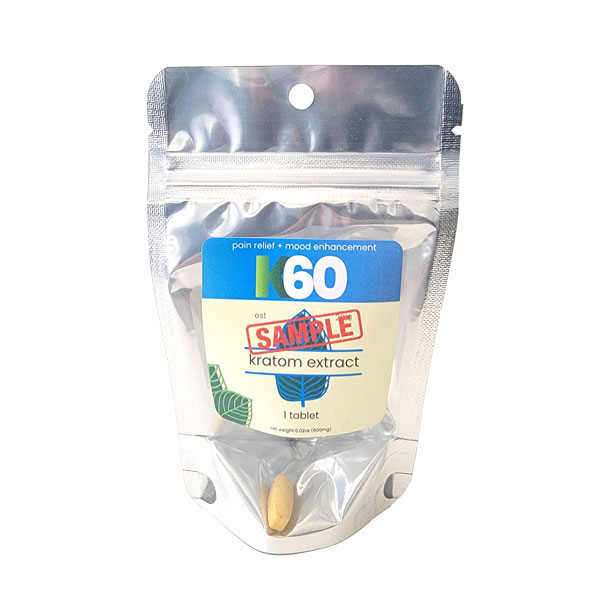Kratom, a tropical tree native to Southeast Asia, has recently gained popularity as an alternative treatment for pain and anxiety. Despite its potential benefits, kratom can also be addictive and may cause withdrawal symptoms when discontinued after prolonged use. As more individuals turn to this natural remedy, it is important to understand the signs of kratom withdrawal and how they can be managed.
Withdrawal symptoms from kratom are similar to those experienced with other opiates such as heroin or morphine. These symptoms typically manifest within 12-48 hours of discontinuing use and can last up to two weeks. Commonly reported symptoms include muscle aches, insomnia, irritability, nausea, diarrhea, sweating, and tremors. More severe cases may experience hallucinations or seizures.
While not life-threatening in most cases, kratom withdrawal can still be uncomfortable and challenging to manage without proper guidance and support. This article will delve deeper into the world of kratom withdrawal symptoms – what causes them, how long they last, and how best to cope with them.
Understanding Kratom Addiction
Kratom addiction is a growing concern in the US, with more people turning to this plant-based drug for its supposed medicinal benefits.
Kratom contains alkaloids that bind to opioid receptors in the brain, producing feelings of euphoria and pain relief.
However, prolonged use of kratom can lead to physical dependence and withdrawal symptoms once the user stops taking it.
Withdrawal management is an essential part of treating kratom addiction.
Symptoms typically begin within 12-24 hours after the last dose, including anxiety, irritability, nausea, sweating, and tremors.
These symptoms can escalate over time and may persist for several days or weeks depending on the severity of the addiction.
While there are no FDA-approved medications specifically designed for kratom withdrawal management, some healthcare providers may prescribe clonidine or other drugs commonly used for opioid detoxification.
Psychological support such as counseling or therapy may also be beneficial in addressing underlying issues related to addiction.
Common Symptoms Of Kratom Withdrawal
Kratom withdrawal symptoms can be both physical and psychological, which is why it’s important to understand the common signs associated with this condition.
Physical symptoms include muscle aches, nausea, vomiting, diarrhea, sweating, and tremors. These symptoms can appear within 12 hours of your last dose and may peak in intensity after two or three days.
Psychological symptoms are often more challenging to manage than physical ones because they involve changes in mood and behavior. Common psychological kratom withdrawal symptoms include anxiety, depression, irritability, insomnia, aggression, and even suicidal thoughts.
For those who have been using kratom for an extended period of time at high doses (over 20 grams per day), these psychological effects may persist for several weeks before subsiding.
Managing withdrawal symptoms at home versus in a treatment center will depend on the severity of your condition as well as your access to medical care.
If you experience severe physical or psychological symptoms during kratom withdrawal, seeking professional help from a detox center or rehab facility may be necessary.
However, if your symptoms are mild to moderate in nature and you feel comfortable managing them at home with over-the-counter medications and natural remedies such as exercise or meditation techniques then self-treatment might be possible.
Ultimately the decision to seek professional help should not be taken lightly since there could be serious health risks involved if left untreated.
Timeline Of Kratom Withdrawal
Kratom withdrawal is an incredibly uncomfortable and challenging experience. The timeline of kratom withdrawal symptoms can vary depending on the individual, their dosage, and how long they have been taking kratom. However, understanding what to expect during each phase of the withdrawal process can help individuals manage discomfort more effectively.
During the early stages of kratom withdrawal, which typically occur within 12-24 hours after stopping usage, individuals may experience flu-like symptoms such as nausea, vomiting, diarrhea, muscle aches, and sweating. As the body adjusts to functioning without kratom’s influence, these symptoms become increasingly severe over time. Managing discomfort during this stage involves focusing on natural remedies that can ease physical pain and reduce anxiety levels. For example:
| Natural Remedies | Description |
|---|---|
| Chamomile tea | Soothes stomach cramps |
| Valerian root | Promotes relaxation and improves sleep quality |
| Kava kava | Reduces anxiety and helps with insomnia |
| Turmeric supplements | Alleviates inflammation |
The second phase of kratom withdrawal occurs around three days after quitting use when the most intense physical symptoms begin to subside gradually. This period also brings psychological challenges like depression or anxiety along with psychological cravings for using Kratom again. It is crucial in this stage to maintain focus on healthy habits like eating well-balanced meals regularly while incorporating regular exercise routines into one’s daily life. By doing so, it becomes easier to manage any lingering discomfort experienced by reducing stress levels naturally.
Overall managing discomfort through natural remedies should be done alongside medical supervision if needed since everyone experiences different types of reactions towards substances like Kratom having differing impacts on their health conditions or physiology; hence seeking expert advice before starting anything new would be wise!
Coping Strategies For Kratom Withdrawal
Kratom withdrawal can be a challenging experience, but there are several coping strategies that individuals can use to manage the symptoms.
One strategy is exercise therapy, which has been shown to improve physical and mental health outcomes during withdrawal. Exercise helps release endorphins in the brain, reducing anxiety and depression associated with kratom withdrawal. Even low-intensity activities like walking or yoga can have significant benefits.
Herbal remedies may also provide relief from some of the more uncomfortable symptoms of kratom withdrawal. For example, kava root has anxiolytic properties that may alleviate anxiety and promote relaxation. Other herbs like passionflower and valerian root may help with insomnia and restlessness.
However, it’s important to note that herbal remedies should not replace medical treatment or advice from a healthcare professional. Always consult with your doctor before trying any new supplement or remedy during kratom withdrawal.
Seeking Professional Help For Kratom Withdrawal
If you are experiencing kratom withdrawal symptoms, seeking professional help is highly recommended.
There are various resources available that can aid in your recovery process and make it easier to manage the unpleasant effects of withdrawal.
Professional resources such as addiction treatment centers or mental health clinics offer specialized care for individuals struggling with substance abuse. They provide a range of services including detoxification programs, therapy sessions, and medication-assisted treatments to alleviate withdrawal symptoms.
Additionally, support groups like Narcotics Anonymous (NA) or SMART Recovery can also be beneficial in helping you navigate through the challenges of quitting kratom. These groups offer peer support and encouragement from others who have gone through similar experiences, providing a sense of community during this difficult time.
If you are feeling overwhelmed by your kratom withdrawal symptoms, remember that there is no shame in seeking professional help or joining a support group. It takes courage to admit that you need assistance and taking control of your health should be celebrated.
By utilizing these resources, you will not only improve your chances of successful recovery but also gain valuable tools to maintain sobriety in the long run.
Frequently Asked Questions
How Long Does Kratom Withdrawal Last?
Time heals all wounds, or so they say. But when it comes to kratom withdrawal, how long does one need to endure the agony?
The duration of kratom withdrawal varies from person to person and depends on several factors like dosage, frequency of use, and length of time using the substance. Generally speaking, acute symptoms may last for three to seven days while post-acute symptoms can persist for weeks or even months after cessation.
Fortunately, there are management techniques that can help alleviate these debilitating symptoms such as hydration, exercise, healthy eating habits, and meditation. Seeking professional medical assistance is also highly recommended to ensure a safe and effective recovery process.
Can Kratom Withdrawal Cause Seizures?
Kratom withdrawal can cause a range of potential risks, including seizures.
While not everyone experiences seizures during kratom withdrawal, it is important to be aware of this possible symptom when managing other withdrawal symptoms.
The duration and severity of kratom withdrawal symptoms vary among individuals, but they typically last for several days up to two weeks.
Managing symptoms may include tapering off the usage of kratom or seeking medical assistance if necessary.
It is crucial to understand the potential risks associated with kratom use and withdrawal in order to make informed decisions about its consumption.
Is It Safe To Quit Kratom Cold Turkey?
Quitting kratom cold turkey may not be the safest option for those experiencing withdrawal symptoms. Kratom withdrawal management is essential to avoid any uncomfortable and potentially dangerous side effects.
It is recommended that individuals seeking to quit kratom seek medical advice and support from professionals who can provide guidance on tapering off usage safely. Additionally, support groups for kratom withdrawal are available to offer emotional support and practical tips on how to manage symptoms.
The process of quitting kratom should always be approached with caution, and it’s important to prioritize one’s health above all else.
What Are The Long-Term Effects Of Kratom Withdrawal?
Long-term effects of kratom withdrawal are a concern for those who have been using the substance regularly. Potential risks include fatigue, depression, and anxiety that can last for weeks or even months after quitting.
Management strategies such as slowly tapering off usage over time may help reduce the severity of symptoms experienced during withdrawal, but it is important to seek medical guidance when considering discontinuing kratom use.
While there is still much research needed on the long term effects of kratom withdrawal, individuals should be aware of potential risks and take steps to manage their usage in a safe and responsible manner.
How Does Kratom Withdrawal Compare To Opiate Withdrawal?
Comparing symptoms of kratom withdrawal to opiate withdrawal can provide insight into the physical effects experienced during this process. While both types of withdrawals share some similar symptoms, such as muscle aches and nausea, there are also notable differences between them.
Kratom withdrawal is generally considered less severe than opiate withdrawal, with milder physical symptoms overall. However, individuals may experience psychological symptoms such as depression and anxiety that can last for several weeks.
Understanding how kratom withdrawal compares to opiate withdrawal can help those going through the process prepare for what to expect and seek appropriate support if needed.
Conclusion
In conclusion, kratom withdrawal symptoms can be unpleasant and last for several days or even weeks. It is important to seek medical advice before quitting cold turkey since sudden cessation of kratom use may trigger seizures in some individuals.
Long-term effects of kratom withdrawal are not yet fully understood, but it is known that prolonged use may lead to addiction and dependence.
Comparing the experience of kratom withdrawal to opiate withdrawal is like comparing apples to oranges – while both involve uncomfortable physical symptoms, each has its unique set of challenges.
As researchers continue to explore the effects of kratom on the body and mind, it is essential that users exercise caution when using this substance. Remember, just as a storm eventually passes, so too will the discomfort of kratom withdrawal with proper care and attention.










